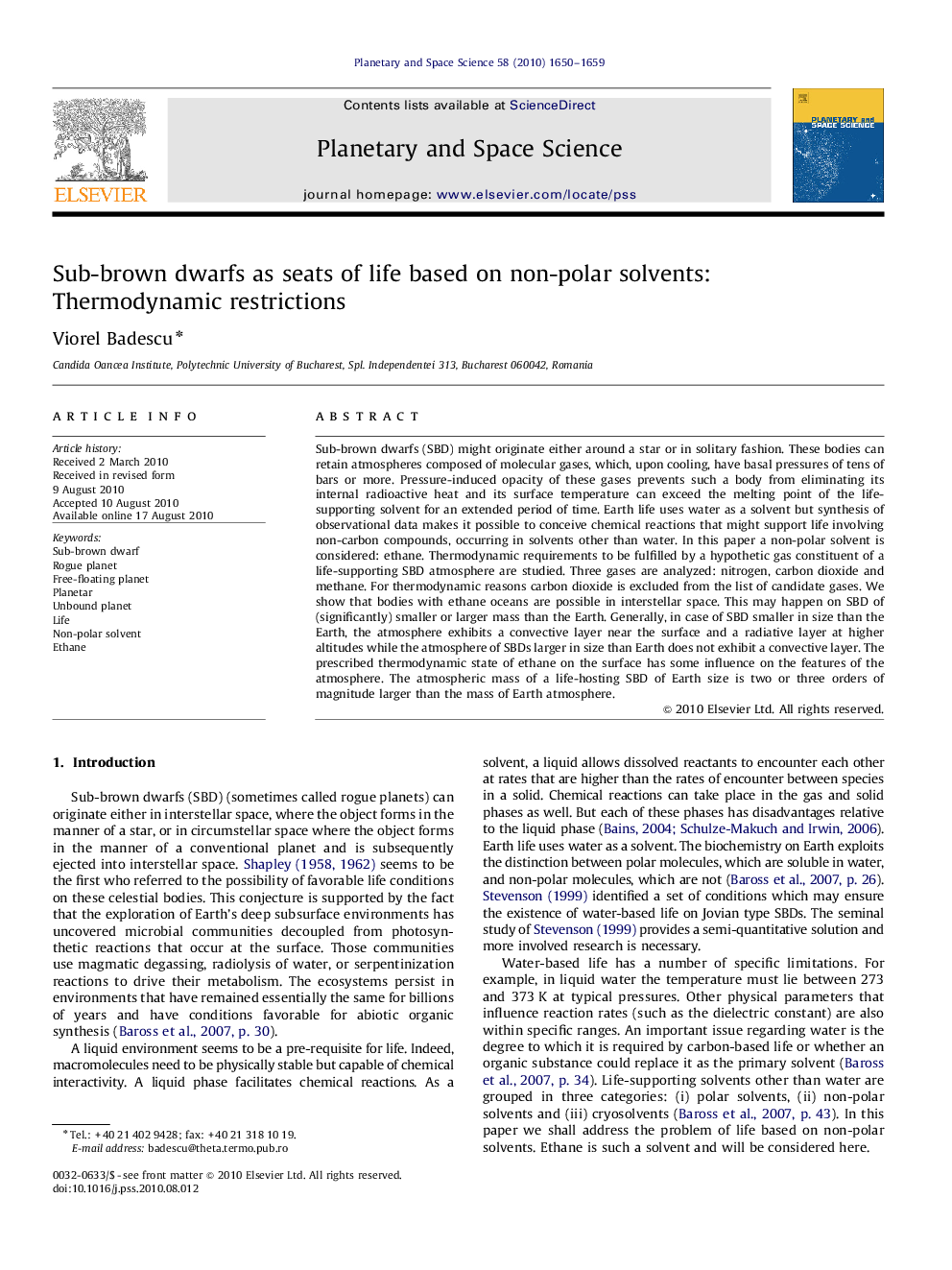| Article ID | Journal | Published Year | Pages | File Type |
|---|---|---|---|---|
| 1781781 | Planetary and Space Science | 2010 | 10 Pages |
Abstract
Sub-brown dwarfs (SBD) might originate either around a star or in solitary fashion. These bodies can retain atmospheres composed of molecular gases, which, upon cooling, have basal pressures of tens of bars or more. Pressure-induced opacity of these gases prevents such a body from eliminating its internal radioactive heat and its surface temperature can exceed the melting point of the life-supporting solvent for an extended period of time. Earth life uses water as a solvent but synthesis of observational data makes it possible to conceive chemical reactions that might support life involving non-carbon compounds, occurring in solvents other than water. In this paper a non-polar solvent is considered: ethane. Thermodynamic requirements to be fulfilled by a hypothetic gas constituent of a life-supporting SBD atmosphere are studied. Three gases are analyzed: nitrogen, carbon dioxide and methane. For thermodynamic reasons carbon dioxide is excluded from the list of candidate gases. We show that bodies with ethane oceans are possible in interstellar space. This may happen on SBD of (significantly) smaller or larger mass than the Earth. Generally, in case of SBD smaller in size than the Earth, the atmosphere exhibits a convective layer near the surface and a radiative layer at higher altitudes while the atmosphere of SBDs larger in size than Earth does not exhibit a convective layer. The prescribed thermodynamic state of ethane on the surface has some influence on the features of the atmosphere. The atmospheric mass of a life-hosting SBD of Earth size is two or three orders of magnitude larger than the mass of Earth atmosphere.
Keywords
Related Topics
Physical Sciences and Engineering
Earth and Planetary Sciences
Geophysics
Authors
Viorel Badescu,
